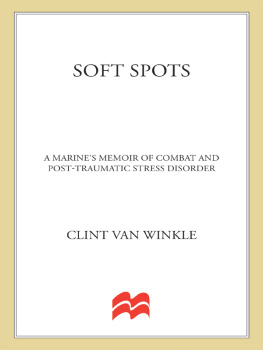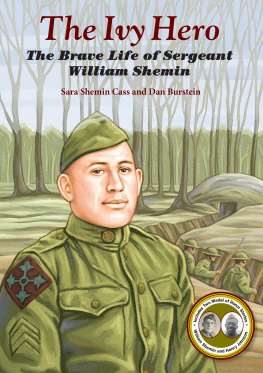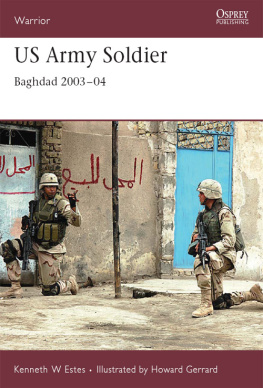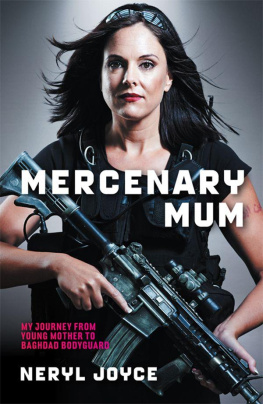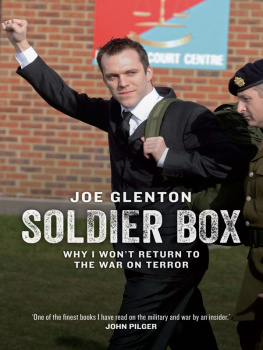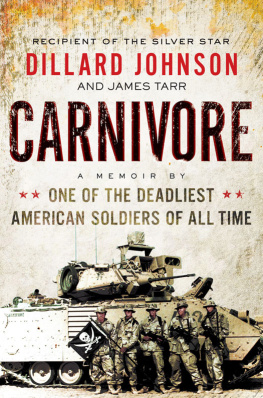
SHOSHANA JOHNSON
with M. L. Doyle
Im Still Standing
From
Captive U.S. Soldier
to
Free Citizen
My Journey Home


Touchstone
A Division of Simon & Schuster, Inc.
1230 Avenue of the Americas
New York, NY 10020
www.SimonandSchuster.com
Copyright 2010 by Shoshana Johnson
All rights reserved, including the right to reproduce this book or
portions thereof in any form whatsoever.
For information address Touchstone Subsidiary Rights Department,
1230 Avenue of the Americas, New York, NY 10020.
First Touchstone hardcover edition February 2010
TOUCHSTONE and colophon are
registered trademarks of Simon & Schuster, Inc.
For information about special discounts for bulk purchases,
please contact Simon & Schuster Special Sales
at 1-866-506-1949 or business@simonandschuster.com.
The Simon & Schuster Speakers Bureau can bring authors to your live event.
For more information or to book an event
contact the Simon & Schuster Speakers Bureau at 1-866-248-3049
or visit our website at www.simonspeakers.com .
Designed by Ruth Lee-Mui
Manufactured in the United States of America
1 3 5 7 9 10 8 6 4 2
Library of Congress Cataloging-in-Publication Data
Johnston, Shoshana, 1973
Im still standing : from captive U.S. soldier to free citizenmy journey home Shoshana Johnston with M.L. Doyle.1st Touchstone hardcover ed.
p. cm.
A Touchstone book.
1. Johnson, Shoshana, 1973 2. Iraq War, 2003Prisoners and prisons, Iraqi.
3. Women prisoners of warIraq. 4. Prisoners of warUnited StatesBiography.
5. Prisoners of warIraq
Biography. 6. Women soldiersUnited StatesBiography. 7. African American soldiersBiography. I. Doyle, M.L. (Mary L.)
II. Title.
DS79.764.U6J64 2010
956.7044'37dc22
[B]
2009018702
ISBN 978-1-4165-6748-6 (hardcover)ISBN 978-1-4165-7028-8 (ebook)
Acknowledgments and Dedication
SHOSHANA JOHNSON
It took a lot of convincing before I would agree to write this book. My parents told me that people would want to hear my story. They told me that since I was the first black female ever to be held as a prisoner of war, I was obligated to tell what had happened to me. I did countless newspaper, magazine, and TV interviews when I returned home, but everyone still said I needed to write a book about the ordeal.
Now, almost ten years since the start of the Iraq War, it has become clear that they were right. It is a story that should be told.
My life has forever changed because of what happened in An Nasiriyah on March 23, 2003. One day, maybe Ill be able to get through a day when I dont think about it, when I dont wonder what I could have done to change things.
This book is dedicated to my family; my parents, Eunice and Claude Johnson; sisters Nikki and Erika, and my daughter, Janelle; nieces Devyn and Ella; all my grandparents; and to my aunts, uncles, and cousins, living and in heaven. All have been there for me through thick and thin. And in loving memory of my comrades who have given their lives in defense of our country. They are not forgotten. I have to thank my friends Dave, Ron, Joe, Jim, Edgar, and Patrick. I am here because they were there for me. Only they can truly understand.
I would also like to thank U.S. military personnel in all regions of the world for defending our freedom and for their service to this great countryespecially the U.S. Marine Corps, which came to my rescue. Thanks to the city of El Paso, Texas, for its unwavering support of my family and me, to Reverend Jesse Jackson and the Rainbow/PUSH family; the Black Caucus; Fields Law Firm of Baton Rouge, Louisiana; Senator Kay Bailey Hutchinson; Congressman Silvestre Reyes; and my native country of Panama. A special thanks to all who prayed for us during our time of captivity.
Thanks to Paul Brown and Craig Wiley for their advice and care in this new world I find myself in.
A special thanks to the fantastic team at Touchstone who helped make this book happen. Especially Sulay Hernandez, who worked so hard to ensure this story made it to print. Sulays professionalism, kindness, and sheer determination are what turned this effort from a thought to a reality.
And finally, to Joey the baby-faced Marine, who was just doing his duty. I owe my life to him and his unit. Oorah!
Acknowledgments
M. L. DOYLE
Like most people, the first time I saw Shoshana Johnson was in a grainy video shown on CNN under captions that read BREAKING NEWS. The image of the petrified woman haunted me for days. I was working for the Army and living in Germany at the time. Thousands of soldiers in the unit I worked for were part of the same massive convoy Johnson and her fellow soldiers traveled in on their way into the heart of Iraq. News of the ambush was horrifying, and since it came so early on in the war, it seemed like a terrible foreshadowing of disaster.
According to the reports, the people who ambushed the 507th Maintenance Company, killing eleven and taking five prisoners, werent wearing uniforms. They were mobs of civilians who overwhelmed the U.S. forces that had wandered into An Nasiriyah by mistake. Should what happened in that city have provided early clues into what would become a war of insurgency featuring roadside bombs and sniper attacks?
Early reports of the ambush seemed to blame the soldiers who had been attacked, indicating subtly that the soldiers had been lost, that they were only maintenance and support personnel and not prepared for heavy combat, and that their weapons had malfunctioned because of lack of maintenance, making it difficult for them to defend themselves. The reports seemed to supply a list of excuses why members of the best-trained military in the world could have been ambushed so successfully and why five prisoners could have been taken. The message we were to take from those reports was that the 507th Maintenance Company was ambushed because they were somehow deficient and not up to the same standards of a typical Army unit. The attack on their convoy and their subsequent defeat was an anomaly.
What we never learned were the details of the force that was brought to bear against the eighteen heavy trucks carrying thirty-three soldiers who had become separated from the main body of the convoy. The 507th wasnt attacked by a simple mob of civilians who hadnt received the message that they were supposed to welcome the U.S. forces with smiles and waves and cries of thank you. These civilians had plenty of ammunition, AK-47s, rocket-propelled grenades, and mortars, and plenty of people trained to use them. They used organized attack methods to separate the convoy and to force the heavy trucks off the roads. They had prepared for the ambush and carried it out.
Was An Nasiriyah just one of many places where the Iraqi insurgency had already taken hold?
One has to wonder what conclusions military leaders may have been able to draw had immediate blame not been leveled against the soldiers of the 507th Maintenance Company. The 507th entered the city by mistake but, in that mistake, flushed out the true nature of what the war in Iraq would become. It was never a war against Saddam and his elite Republican Guard, but a war against well-armed, well-trained, civilian-clad fanatics who knew they couldnt beat the U.S. Army in a head-to-head fight. Surprise and ambush were their best weapons. The enemy learned that lesson in An Nasiriyah on March 23, 2003, but it would be months after the ambush and the capture of Shoshana Johnson and her fellow soldiers before Donald Rumsfeld and the Bush administration would even acknowledge that we were fighting an insurgency.
Next page

